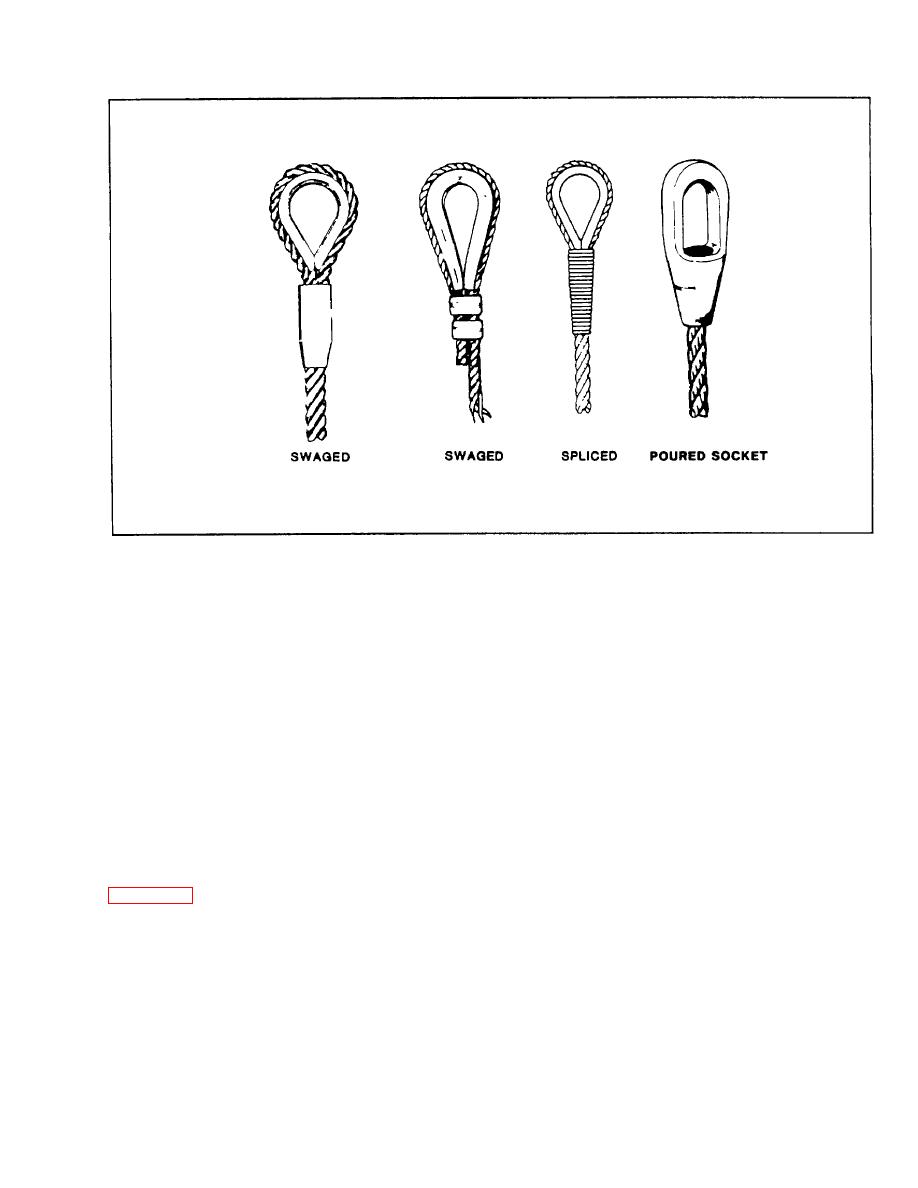
| Tweet |

Custom Search
|
|

|
||
 TB 55-1900-232-10
Figure-15. Types of Wire Rope Terminations.
used in Navy towing applications: swaged, spliced and socketed. See Figure 5-15. The hand-spliced eye has less
strength than the breaking strength of the wire. For instance, 1%-inch to 2-inch hand-spliced eyes develop 75 percent of
the breaking strength of the wire, while 2/4-inch and larger wires have an efficiency of only 70 percent. Nonetheless,
hand-splicing enjoys continued popularity because of field repair capability.
A subset of a wire splice is the use of wire clips. These should be used only in an emergency (such as damage to or loss
of the normal end fitting). See NAV-SHIPS Technical Manual 613 (Ref. 15) for the proper place- ment and number of
wire clips.
Swaged eyes are more common than spliced eyes. Existing swaging technology is so highly-advanced that virtually all
types of wire rope terminations can be made. Properly-made swaged eyes develop 100 percent of the strength of the
wire. Swaged terminations are applied only to wire rope with wire rope cores A fiber rope core wire can be swaged by
replacing the fiber core at the termination with a strand of the wire.
Poured zinc socket terminations are becoming very common and are prepared in accordance with NAV-SHIPS Technical
Manual 613. Epoxy-type poured sockets are not suitable for towing purposes
See also Appendix B for data on wire termination efficiencies
5-5.4.4 Synthetic Line Terminations. In general, the same methods are used for splicing synthetic line as for natural
fiber line. However, exercise care to maintain the stranded form when splicing a synthetic fiber line. If this is not done,
the strand will collapse and form a bundle of tangled yarns. Also, since the felting (tendency to mat together) action of
synthetic
5-30
|
||
 |
||